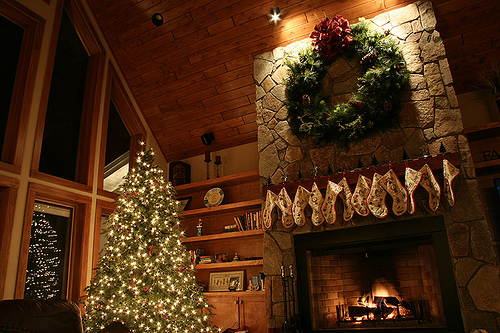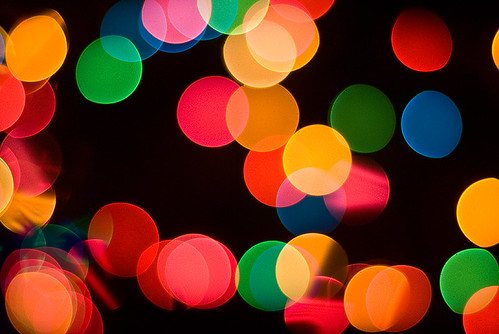Surviving Christmas: Fire safety tips for the holidays

Placing Christmas tree near the fireplace is no less than an invitation to a house fire. [Image courtesy: andrew.petro]
U.S. fire department responds to an average of 230 Christmas tree fires every year. These fires cause an average of 6 deaths, 22 injuries, and $18.3 million in direct property damage every year.
Electrical problems make for one-third (32%) of home Christmas tree structure fires in America.
It’s easy to forget the obvious fire hazards during the merry-making. So here’s a reminder post about everything you should watch out for, so that your holidays are merry and bright — just not too bright.
The comforts of home cooking
Many holiday traditions revolve around food, and big elaborate meals require a lot of attention in the kitchen. Unattended cooking is the leading cause of home fires during the holidays. Fifty-eight percent of kitchen fires involve stovetops. Moreover, electric stovetops are more risky than gas ranges.
-
- Stay alert in the kitchen when cooking, whether you are frying, grilling, simmering, baking, roasting, or boiling food. Turn off the stove if you have to leave the kitchen for a small period.
- Keep flammable items like potholders, oven mitts, packaging material (foil, cling wrap, seal bags), wooden utensils, and loose clothing, away from the stovetop.
O Tannenbaum, O Tannenbaum ..
… How flammable are thy branches! According to the US Fire Administration, one of every 40 Christmas tree fires results in a death. Dry trees catch fire more easily than fresh ones. If you bring home a natural tree for Christmas, check its freshness and if you bring an artificial tree, check it for its fire resistance.
- Real Christmas trees should be placed in a stand that can hold at least one gallon of water. The tree should be watered daily.
- Do not place your Christmas tree in the path of traffic or near exits.
- Cut a few inches off the trunk of your tree to expose the fresh wood. This helps in better water absorption and keeps your tree from drying out and becoming a fire hazard.
- The tree, gifts, wrapping paper, and decorations should not be placed near any heating source like fire places, radiators, wood stoves, television sets, and computers.
- Use only noncombustible materials to trim a tree. Don’t use lighted candles or electric lights on a tree or near other evergreens.
Better to light a candle (safely!) than to curse the darkness
December is the peak month for candle fires. According to US Fire Administration, 11% of all home candle fires occur during this month as compared to 4% that occur rest of the year.
- Never leave candles lit while you’re out of the room or sleeping.
- Never place candles on or near your Christmas tree or holiday wreath.
- Always use nonflammable holders and place candles out of children’s reach.
- The safest alternative is battery-operated candles – they even flicker merrily like real candles!
Twinkling lights on winter nights

[Photo credit: George Deputee]
- Make sure outdoor lights and cords are not used indoors, and avoid running extension cords through doorjambs or under carpets.
- When decorating, check for frayed, worn out wires and broken light sockets.
- Plug outdoor lights and equipment into a ground fault circuit interrupter outlet.
- Instead of nails or tacks, use plastic hooks, clips, or insulated staples to hang or support lights.
- Install outdoor lights with the bulbs hanging down to prevent moisture from accumulating in them. Never connect more than three strands of outdoor lights.
Besides the above Christmas fire safety tips, remember to check your smoke alarms weekly during the holiday season. Keep fire extinguishers, escape ladders, emergency kits, and flashlights within easy reach. Last of all and most importantly, enjoy a safe Christmas!
Category: Safety Tips












